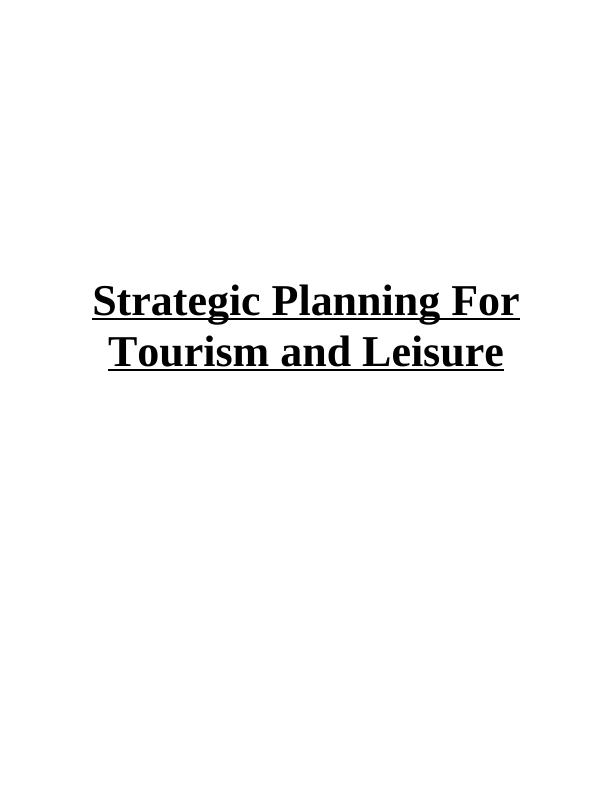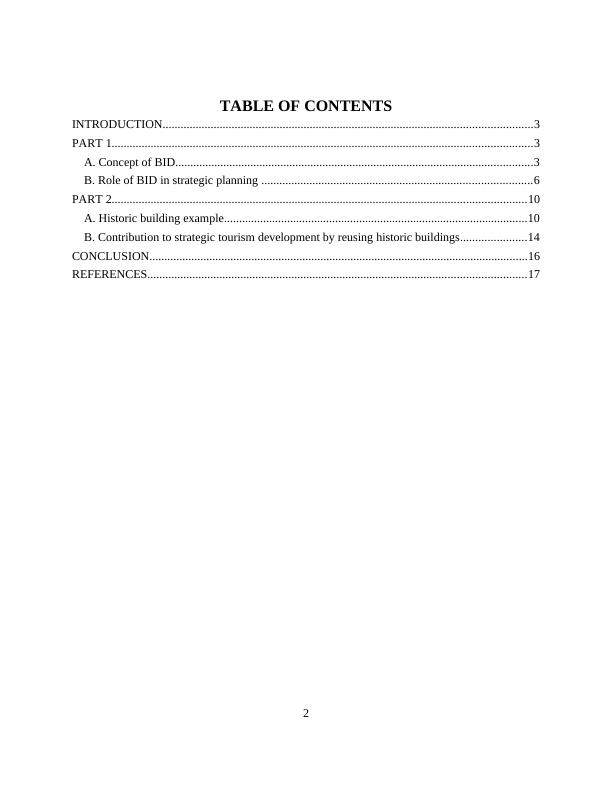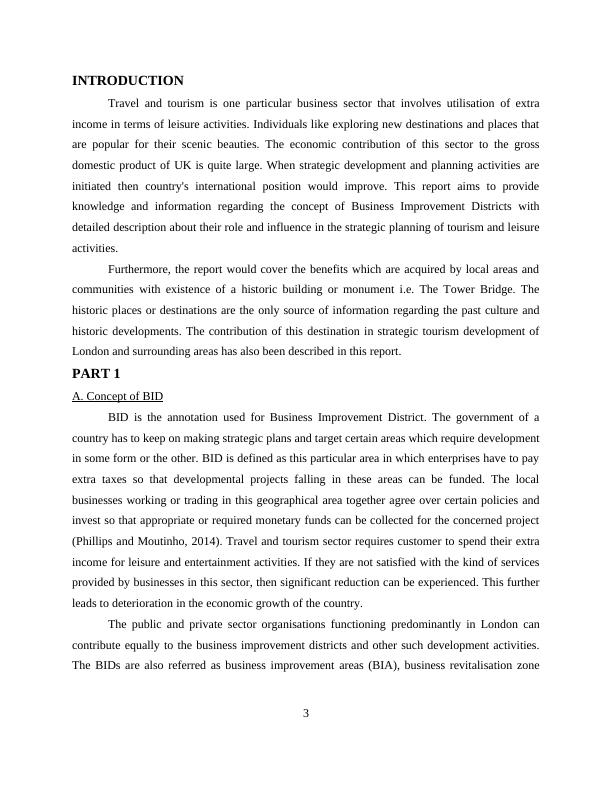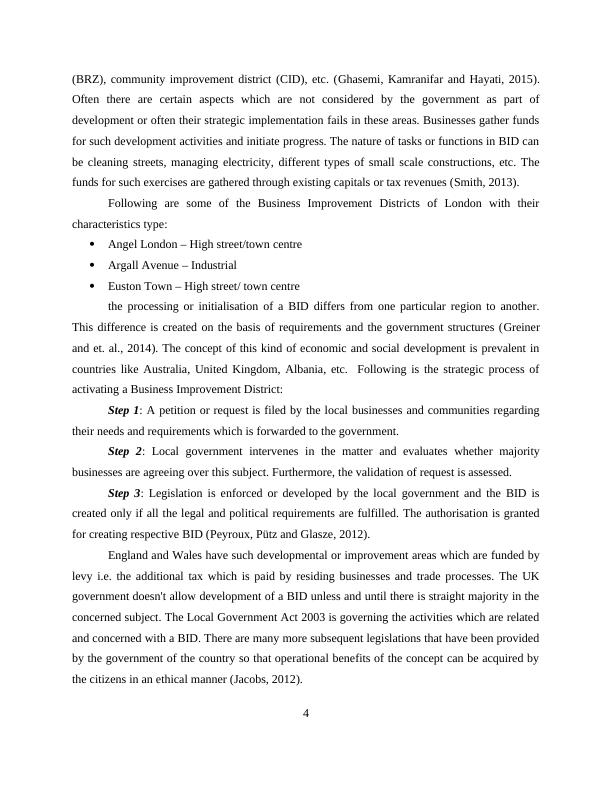Strategic Planning for Tourism and Leisure: Role of BIDs and Historic Buildings
18 Pages4643 Words68 Views
Added on 2023-04-04
About This Document
This report discusses the concept of Business Improvement Districts (BIDs) and their role in strategic planning for tourism and leisure. It explores the benefits of historic buildings, using the Tower Bridge in London as an example, in tourism development. The report highlights the importance of BIDs and historic buildings in enhancing the economic growth and attractiveness of tourist destinations.
Strategic Planning for Tourism and Leisure: Role of BIDs and Historic Buildings
Added on 2023-04-04
ShareRelated Documents
End of preview
Want to access all the pages? Upload your documents or become a member.
Strategic Planning for Tourism and Leisure Assignment
|15
|5324
|248
Assignment Strategic Planning for Tourism and Leisure
|16
|5866
|237
Strategic Planning for Tourism and Leisure- Doc
|17
|5908
|286
Report On Strategic Planning Of Charlton House
|14
|5928
|65
Report On The Role Of Business Improvement Districts |Tourism Industry
|14
|5041
|223
Strategic Planning for Tourism and Leisure : Assignment
|17
|5841
|55




